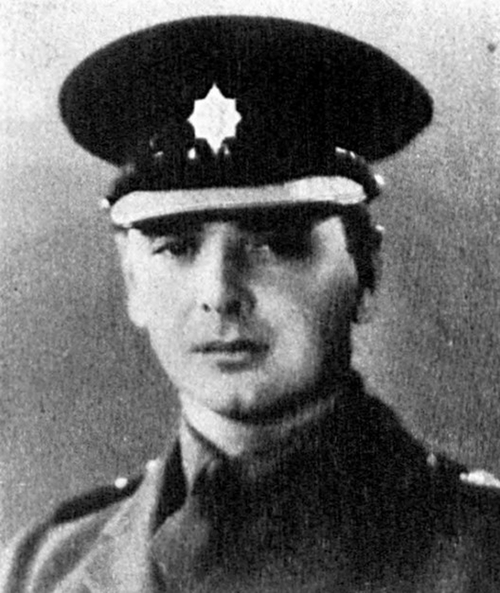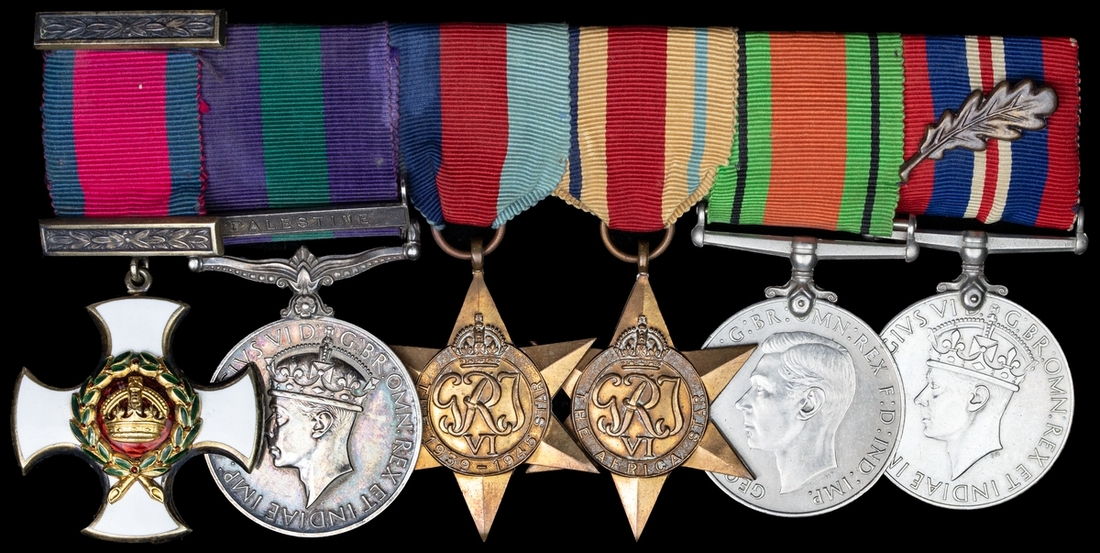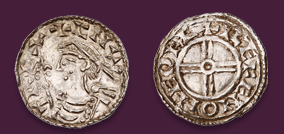Auction: 25003 - Orders, Decorations and Medals
Lot: 195
'Surrender is not an operation the Battalion has practised in peacetime, and we do not intend to start now.'
A signal sent by Tim Sainthill, then commanding the 3rd Battalion, Coldstream Guards, at the fall of Tobruk in June 1942.
The legendary Second World War breakout from Tobruk D.S.O. group of six awarded to Lieutenant-Colonel H. M. 'Tim' Sainthill, 3rd Battalion, Coldstream Guards
Famously ignoring orders to surrender, he orchestrated the escape of nearly 400 men from the besieged port, telling them to 'Drive hard, shoot straight and go right through in a confusion of dust and bullets'
'There was,' noted the regimental historian, 'an air of unorthodoxy about the 3rd Battalion, with its battered yellow trucks, the Arab argot of the guardsmen, the Hebron coats, desert boots and coloured fly-switches of the officers'
As it transpired, it was an inspiring 'air of unorthodoxy' that rose above an otherwise melancholy affair, for over 30,000 Allied troops were taken P.O.W. on Tobruk's fall: no wonder King George VI observed that Sainthill's defiance amounted to 'a splendid exploit'
Distinguished Service Order, G.VI.R., the reverse of the suspension officially dated '1942'; General Service 1918-62, 1 clasp, Palestine (Capt. H. M. Sainthill. C. Gds.); 1939-45 Star; Africa Star; Defence and War Medals 1939-45, with M.I.D. oak leaf, mounted as worn, good very fine (6)
D.S.O. London Gazette 13 August 1942:
'In recognition of gallant and distinguished services in the Middle East.'
The original recommendation states:
'At 1600 hours on 20 June at Tobruk, after the enemy had penetrated the defences, Major Sainthill was the senior officer of 3 C.G. at Battalion H.Q., his C.O. having gone to Brigade H.Q. with whom communication was cut about this time. Two companies had already been overrun and so Major Sainthill decided to withdraw the remainder of the battalion to the area of Fort Pilastrino to link up with 1/Worcestershire Regiment. This movement was accomplished successfully, and a defensive position was established during the night in conjunction with the O.C. 1/Worcestershire Regiment and a South African Field Artillery Regiment.
At 0645 hours on 21 June, Major Sainthill was informed by a Troop Commander of the South African Artillery that he had orders to destroy everything, guns, equipment and vehicles. Major Sainthill queried this order with the O.C. 1/Worcestershire Regiment, who went to see Lieutenant-Colonel White, South African Artillery, who confirmed it. Major Sainthill immediately decided to assemble the battalion in the transport area and attempt to break out. He detailed six 3-tonners to go back and pick up me of the Worcestershire Regiment.
Petrol was equally distributed and at 0830 hours, led by an officer of the 67th Medium Regiment, the column proceeded and made an exit at point S4. The bulk of the battalion, with some South Africans, passed through the gap, encountering heavy small arms fire for approximately two miles.
At 2000 hours the column reached the frontier wire. It totalled 387 ranks, of which 16 officers and 183 were 3 Coldstream Guards. The battalion brought out, too, six anti-tank guns.
I consider that the initiative shewn by Major Sainthill was outstanding at a most critical time and that his prompt and courageous decision enabled nearly four hundred person to avoid capture by the enemy.'
Hereward Maryon Sainthill was born in London on 2 November 1904, the son of Lieutenant-Colonel C. G. H. St. Hill. Sadly, his father was killed in action in July 1917, while commanding the 2/5th Battalion, The Sherwood Foresters.
Young Hereward - known as 'Tim' at Eton where he excelled as a coxswain on the river - was commissioned in the Coldstream Guards direct from Sandhurst in 1924.
Described by Canon Ronald Lunt, M.C. - his regimental obituarist - as 'wiry, determined, adventurous and individualistic', Sainthill 'sought out in peacetime as much adventure as the Army could provide', an ambition happily pursued on his joining the 2nd Battalion in China. A trip to Manchuroa aside, he made his own way home through Indo-China, Siam and India in the following year. He then sought secondment to the Royal West African Frontier Force, in which he served for six years, and brought back 'a fund of stories of African magic and tribal lore'.
Advanced to Captain, he served in the 3rd Battalion in Middle East in the period leading up to the outbreak of war, commanding No. 2 Company which later became an Anti-Tank Company. It was during this period he took part in the recapture of the Old City of Jerusalem, 'an event which made upon him a profound impression'.
No surrender
Of his subsequent part in the North Africa operations - in which he was promoted to Major and also mentioned in despatches (London Gazette 1 April 1941, refers) - Canon Lunt states:
'Up and down the Western Desert he went as the fortunes of war ebbed and flowed, under Wavell, Ritchie and Auchinleck - figuring in the battles at Sollum and Halfaya, Antelat and Agedabia, the Knightsbridge Box and Tobruk. In June 1942, the Knightsbridge Box was evacuated and the battalion withdrawn into Tobruk. By Sunday the 21st June the defences of the port had been breached, Divisional Headquarters overrun and our Commanding Officer captured - the order was passed round to surrender. It was then that we heard 'Tim's decided to make a break for it' - and on that day he led out across the minefields into the desert the remains of the battalion, together with some others from the South African Division and other regiments who would join us. And he continued to bring the tried and motley convoy on the last drop of their petrol to the safety of 'the wire' and, the welcome of the Royals. Thus the old campaigner won his D.S.O.'
Sainthill did indeed see considerable action prior to the creation of the Gazala Line and a series of defensive 'Boxes'. The regimental history sets the scene:
'The Eighth Army now created the Gazala Line from Tobruk to Bir Hacheim, a series of 'Boxes' with artillery round which armour could manoeuvre. The 3rd Coldstream, with a Scots Guards company and guns from 2nd Royal Horse Artillery and the Northumberland Hussars, occupied the vital Knightsbridge Box - flat desert two miles square - on the Trigh Capuzzo road south-west of Tobruk on 17 May. German tanks attacked ten days later, but were repulsed and their supply column was shelled. Patrols went out each day from the Box, which was shelled for seventeen days and roasted in the sun, with respite only during dust-storms.'
Eventually orders were received to abandon the Knightsbridge Box and retreat to Tobruk, a retreat in which the Guards Brigade was harried by two Panzer Divisions. But the much-battered port offered no respite. In a report later submitted by Sainthill, he spoke of the appalling state of the port's defences:
'When the 3rd Battalion came into Tobruk and had to man the positions for the second time, it was confronted with a formidable task from the very commencement. During the intervening period the garrison had been reduced to an absolute minimum … Naturally, under such circumstances, the bulk of the defences left unattended had deteriorated very rapidly. Vast stretches of anti-tank ditches had become filled in, minefields uncovered and weeks of work were required before the positions could be manned efficiently … The place was a mass of minefields, English, German and Italian, and there were no minefield maps. Routes had to be cleared by sappers with mine detectors, causing, of course, an interminable delay and preventing the reconnaissances for the counter-attack roles from ever being completed … '
Here, then, the circumstances in which Sainthill found himself in June 1942, the same circumstances as when he assumed command of the battalion on the loss of his C.O. Here, too, on the 21st June, the moment the Tobruk's garrison commander elected to surrender to Rommel's encircling Afrika Corps. The regimental history takes up the story:
'Among all ranks one sensed a silent yet spontaneous refusal to accept surrender,' wrote the
Adjutant, Captain Mervyn Griffith-Jones. At that moment a Gunner officer who knew his way through the minefields appeared. Maps were examined and Major Sainthill decided to try to break out without delay, despite the dangers of daylight movement. Orders were simple: "Drive hard, shoot straight and go right through in a confusion of dust and bullets".'
The column drove flat out, scattering surprised Italians, and headed for the RV twenty-five miles south, where sixty vehicles collected, including armoured cars and Coldstream carriers. A route was found onto the El Adem escarpment, but the appearance of armoured cars caused alarm, until they were identified as South African.
Two days later the column reached Daaba. No. 1 Company (Captain David Watts-Russell) was already there, having lifted mines to find a way through. They had been overtaken by a Coldstream truck driven by Padre Lunt, held at gunpoint by an Italian. The guard was disarmed and the Company bluffed its way past more Italians, crossing the Tobruk by-pass while enemy vehicles waited for them. Others, including Lance-Sergeants J. H. Brown and C. A. Turner in their unreliable Bren carriers, arrived later.
Major Sainthill brought seventeen Coldstream officers and 183 other ranks (and 200 South
Africans) out of Tobruk; 388 Coldstreamers were captured. Tim Sainthill is reputed to have sent a signal to Headquarters stating that 'Surrender is not an operation the Battalion has practised in peacetime and we do not intend to start now.' He was awarded the D.S.O. for what The King described as a "splendid exploit".'
The regimental history continues:
'The situation in the Western Desert following the Tobruk disaster was critical. General Auchinleck took personal command of Eighth Army on 25 June and prepared to defend Cairo. A Composite Guards Battalion, from 3rd Coldstream and 2nd Scots Guards, deployed to the Alamein Line on 9 July, where, for a fortnight, weary Guardsmen patrolled north of the Qattara Depression and Coldstream anti-tank guns fought gallantly on Ruweisat Ridge.
The Composite Battalion was relieved on 29 July and 3rd Coldstream moved to Mena, by the Pyramids.'
Subsequent career
The battalion subsequently moved to Syria, from whence Sainthill returned home, where he was advanced to Temporary Lieutenant-Colonel in August 1943 and given command of the Training Battalion at Pirbright.
On retiring from the Coldstream Guards in 1947, he settled in the west country and was for several years C.O. of the 4/5th Duke of Cornwall's Light Infantry. He died in London in October 1970. In concluding his obituary, Canon Lunt stated:
'I think of him at his best in the desert, a wonderful host in his laager at night, a great raconteur, a commander just and kind, greatly admired by his junior officers and guardsmen, wily and ingenious both in how to outflank the foe and also how to make the desert habitable.'
Subject to 20% VAT on Buyer’s Premium. For more information please view Terms and Conditions for Buyers.
Estimate
£6,000 to £8,000
Starting price
£5800







